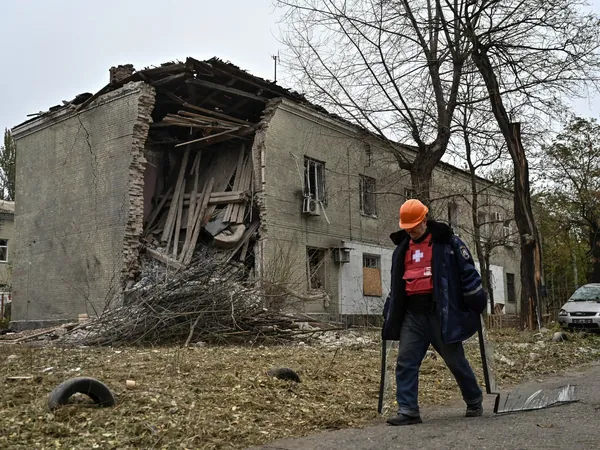
Life-Saving Breakthrough: Tuberculosis Screening Initiative Transforms Health in Nunavut's Inuit Communities!
2024-11-05
Author: Charlotte
In the remote and rugged expanse of Nunavut, Canada, the harsh climate and historical challenges have resulted in profound health disparities, particularly affecting its predominantly Inuit population. One of the most pressing public health crises in this region is the rampant tuberculosis (TB) infection rate, which averages an astonishing 450 times higher than the national average in Canada.
For decades, Nunavut has been trapped in a cycle of ineffective TB elimination strategies, leaving residents and health officials disheartened. However, a glimmer of hope has emerged through remarkable research published in the October 2024 edition of The Lancet Regional Health – Americas by Zwerling and his team. Their focus on a community-wide TB screening initiative in one small Nunavut town offers a promising model that could be replicated across the province.
This initiative is not just a beacon of hope in the fight against TB; it is a potential game-changer in the realm of public health policy. The authors of the study outlined a strategic approach to screening that could revolutionize how healthcare is provided in such isolated communities, possibly altering the trajectory of TB incidence rates. GlobalData epidemiologists project a rise in diagnosed TB cases in Canada, from nearly 2,000 in 2024 to over 2,100 by 2033. However, the innovative strategies highlighted by Zwerling and colleagues could stave off this grim forecast if embraced on a larger scale.
A Transformational Presence in Qikiqtarjuaq
The study evaluated a 2018 screening initiative conducted in the small town of Qikiqtarjuaq, home to approximately 625 Inuit residents. Provincial health authorities spearheaded the mission with portable clinics, outreach campaigns urging residents to attend screenings, and an unwavering commitment to detecting and treating every case of TB.
The stunning results of this program included screening a total of 514 community members, uncovering 11 new TB diagnoses alongside 157 cases already known. The responsive care provided was commendable; all active TB patients initiated treatment immediately, and an impressive 78 out of 105 individuals with latent infections completed their treatment regimen.
The follow-up evaluations and a thorough cost-effectiveness analysis showed that this initiative not only led to a reduction in new infections but also effectively interrupted the progress of early-stage illnesses—all at a fraction of the anticipated expense. Such evidence reinforces the argument for broad-based screening and treatment programs, combined with robust public awareness campaigns to destigmatize the pursuit of healthcare.
A Call to Action: The Future of TB Control in Canada
The findings by Zwerling and colleagues present a compelling case for implementing community-wide TB screening in Nunavut. However, further research is essential to determine if these positive outcomes can be replicated in other communities within the province. Additionally, the approach holds promise for adaptation in regions facing similar health inequities, offering a potential lifeline to other marginalized populations across Canada.
If subsequent investigations validate the effectiveness of this community-wide screening strategy, it could serve as a significant weapon in the ongoing battle against TB—a disease that has long plagued one of Canada's most vulnerable groups. The transformative impact this could have on public health policy is immense, potentially saving lives and paving the way for healthier futures in Inuit communities and other disadvantaged populations. This is more than a research study; it is a lifeline for countless individuals yearning for better health and well-being.









 Brasil (PT)
Brasil (PT)
 Canada (EN)
Canada (EN)
 Chile (ES)
Chile (ES)
 España (ES)
España (ES)
 France (FR)
France (FR)
 Hong Kong (EN)
Hong Kong (EN)
 Italia (IT)
Italia (IT)
 日本 (JA)
日本 (JA)
 Magyarország (HU)
Magyarország (HU)
 Norge (NO)
Norge (NO)
 Polska (PL)
Polska (PL)
 Schweiz (DE)
Schweiz (DE)
 Singapore (EN)
Singapore (EN)
 Sverige (SV)
Sverige (SV)
 Suomi (FI)
Suomi (FI)
 Türkiye (TR)
Türkiye (TR)